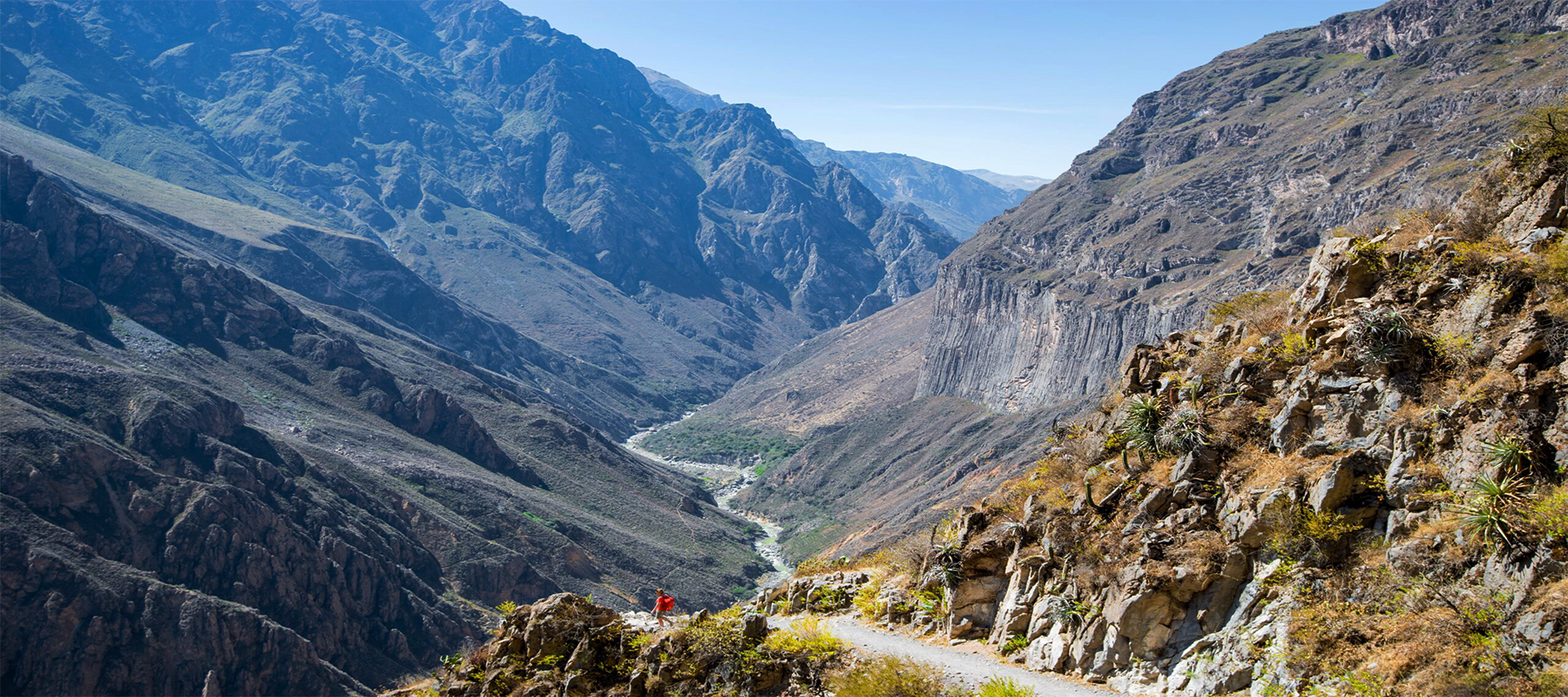
Adventure Travel
Peru's Colca Canyon Is Twice As Deep As the Grand Canyon — How to Visit the Breathtaking Destination
p
by Elizabeth Gilbert
19-07-2024

Adventure Travel
p
by Elizabeth Gilbert
19-07-2024
You should also include Cañon del Colca, also known as Colca Canyon, on your itinerary, even though the Inca Trail leading to Machu Picchu is perhaps the most well-known hike in Peru. With a depth of nearly 14,000 feet from top to bottom, Colca Canyon is one of the world's deepest canyons. The Andean condor, a revered bird in Incan tradition, calls this canyon home. Everything you need to know to organize a journey to this must-visit location is right here.
The 60-mile Colca Canyon, formed out by the Río Colca on its journey to the Pacific Ocean, flows through the Andes highlands of Peru. Although the settlements here predate the Inca civilization, it is bordered with scenic mountain towns and agricultural terraces that were built by Spanish conquistadors. The White City, Arequipa, is the closest big city. Its buildings are constructed from white volcanic sillar stone. The canyon is approximately a three- to four-hour journey from this second-largest city in Peru.
From the rim or on a hike to the bottom, you can see Colca Canyon in all its glory. You may still observe the condors from the Mirador Cruz del Cóndor viewpoint, and the former is undoubtedly the easier option. Hikers seeking a real adventure can find it by venturing into the Colca Canyon, which is twice as deep as the Grand Canyon. Along the way, they will be rewarded with breathtaking views at every turn.
Colca Canyon is accessible all year for trekkers, although the dry season (about April–October) is when most people go. Our recommendation is to go in May or September, when there are fewer people, rather than in June or August, when it is high season. Although Machu Picchu is located in Peru's Sacred Valley, Colca Canyon is more quieter.
You can also go there when it's raining, but if it's really raining, the trails could be very slippery.
A large number of tourists travel from Arequipa to see Colca Canyon. There are a plethora of tour companies that offer transportation on journeys to the rim, ranging from multi-day guided treks to day visits by bus. Cabanaconde and Chivay are two famous base communities that you may reach on your own or with public transportation (shuttles or buses).
Instead of tackling a single journey like the Inca Trail, hikers can explore Colca Canyon's network of routes. Instead, there are a variety of canyon communities from which to embark; however, many tour companies from Arequipa begin their adventures in Cabanaconde, making it the most popular. Sangalle, an oasis on the canyon bottom, is a common overnight stop for trekkers.
Because of the challenging terrain, most treks last many days. With thousands of feet of elevation gain and loss across very steep routes, this is definitely not a hike for the faint of heart. Plus, it's done at a higher altitude, so you'll need some time to adjust. Therefore, people who are not experienced multiday hikers might consider joining a guided excursion. If you opt to go it alone, you should prepare ahead of time by plotting your route, downloading maps for offline usage (and getting a paper copy just in case), and bringing along all the necessary supplies.
If you're not up for an advanced hike, there are tours to the rim of Colca Canyon that will give you a bird's-eye view of the canyon below, as well as opportunities to see mountain communities, the hot springs in Chivay, and condors from the Mirador Cruz del Cóndor overlook. There are tours that depart from Arequipa and last just one day, as well as longer itineraries that include hotel stays of two days or more.